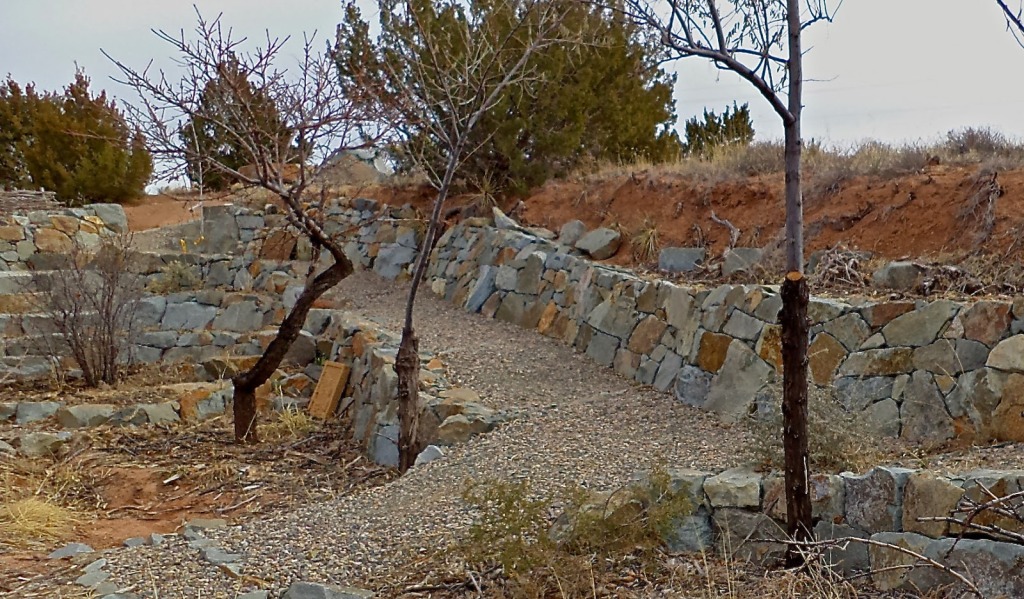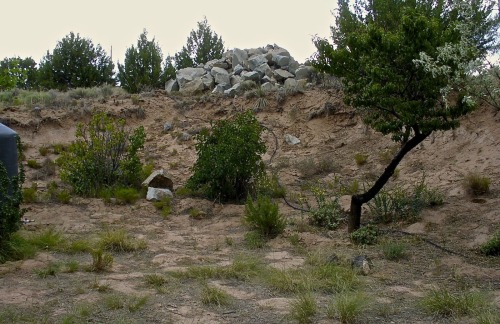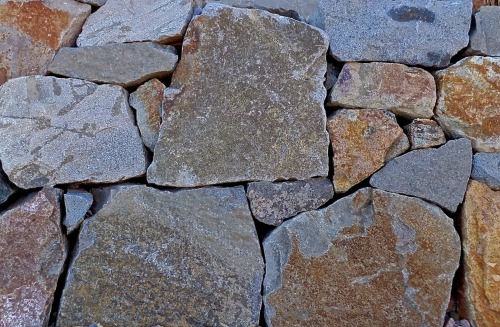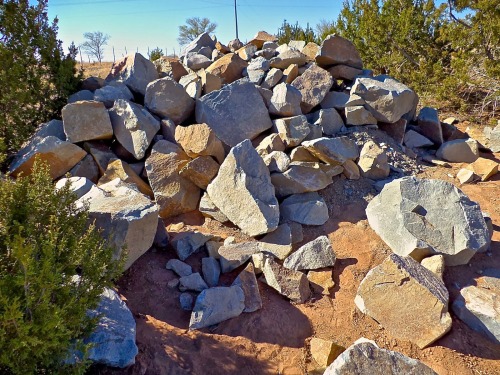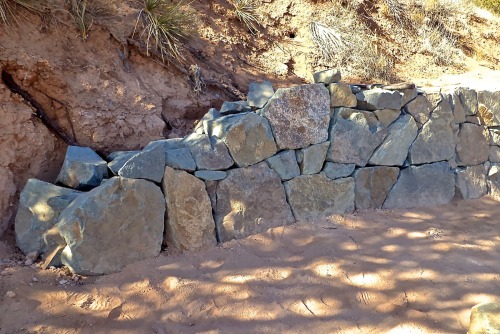You might take them for granted when you see one, but building dry stack stone walls is not for sissies:
“This is the first in a series of tips on building dry stack stone retaining walls for landscaping, gained from my personal experience and particularly aimed at the owner builder. The picture below shows the landscaping dilemma we were confronted with when we purchased the house. The house pad was originally leveled by cutting into the embankment you see below, when the house (just behind the camera) was built some 30 years ago. Since that time the 8’+/- x 100′ cut was basically left to erode on its own and directed rainwater back towards the house.”
This had to be dealt with before any further landscaping could be done, and not being into railroad ties as a solution stone seemed the best choice. We had the first of 3 loads of what ended up being a total of 44 tons of stone delivered from a nearby quarry. In the next post we will take a closer look at the stone and where it came from. Before I go any further I want to stress that this is very hard work and the risk of serious injury is real. One should be in top physical shape and be constantly aware of your surroundings. A large unstable stone could easily break a bone. Hazards of tripping over stone and tools are ever present, and then there is your back. If you have any hesitation don’t attempt this work.
Assembling the Puzzle
As soon as I can I start to spread the pile out and create avenues for access. I didn’t have a lot of area to spread out for this project so I was very limited. The first thing I do in sorting the stone is to create piles of rubble that have no value as face stones and will be used as the hearting – the stone fill hidden in the back of the wall which I use a lot of. The trick here is to have the skill to look at a stone and see if it has a flat face (the part you see in a finished wall) and has enough length to extend into the wall behind that face. This is hard to explain and when we get to the post on actually building the wall we will look at this further, with examples.”
I sort stones by size or shape, creating piles of say flat stones in one place and long rectangles in another. Potential steps that are smooth on the top and thick and heavy are set aside. If I select a stone that I think is what I am looking for but I find it won’t work, I don’t just throw it back, I place it in the appropriate pile. I also am making mental notes of what is where so I can go right to it when I need it. With all the emphasis on sorting, the counterweight to that is not to pick up or move stone any more than you need to.”
See and read more: Tips on building a dry stack stone wall. There is much more to discover on the Alt. Build Blog.
